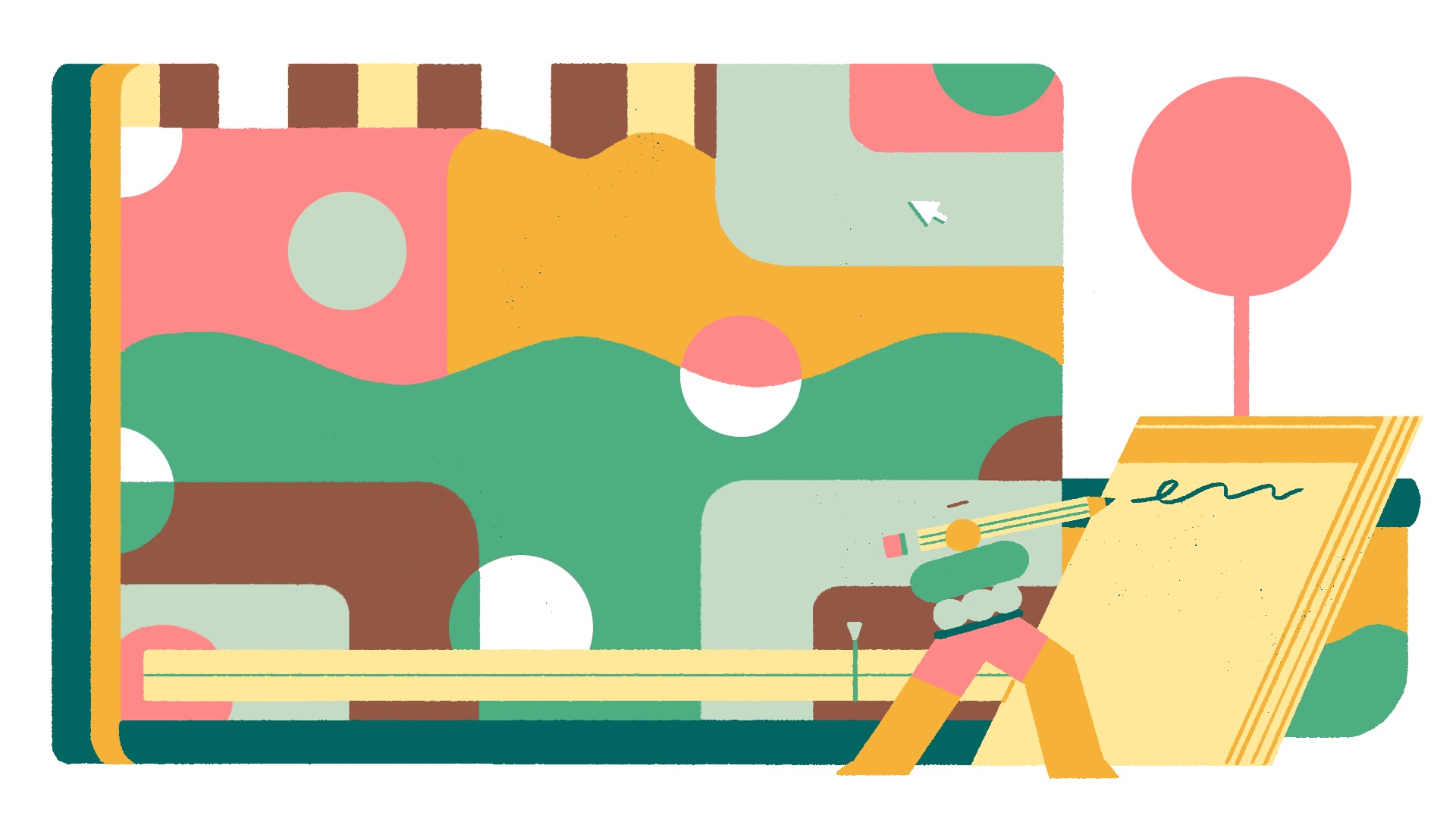Oh hey! Didn’t see you there, just over here resting my arms from a day of sweet animation gains. My name is Rohan McDonald and I’m an Art Director at Demo Duck. I spend most of my time between my obsessive passion for cel animation and the insufferable hobby of exercise. Throughout my grade school, college, and now in my full-time professional career, I’ve been using fitness to better understand what I create in my work.
I’ve trained in martial arts, practiced rock climbing, exhausted myself with weightlifting, gym-ratted with crossfit, and even pinged the occasional pong. Within all of these disciplines, one major observation stands out to me—there is a natural connection between animation and fitness. Fitness and the arts may not seem closely linked, but seeing and understanding the personal connection between your body and your animation can make you a better and healthier animator.
In this post, I’ll outline some concepts, ideas, and practices I’ve pulled from various fitness and athletic disciplines that have helped me become more comfortable as an animator.
Let’s feel the burn and get ready to learn, here we go.
Warning: Sporadic fitness jargon and puns to follow. Proceed at your own risk.
Just like our bodies before a marathon, our animation bodies need a bit of a warm-up.
Animators have to use their bodies. It’s our most useful and accurate tool when charting out motion of any kind. Just like any athlete, warming up will vastly improve your movement. Warming up for any activity, but especially animation, is a daily opportunity to reintroduce yourself to your body and vice versa. This can help you develop a project specific muscle memory and find a creative headspace that you can return to again and again—helping you be a more productive animator!
Let’s say you’re training to run a marathon. Each aspect of a training session has a logic to it, starting with an intentional warm up. A warm-up helps activate all the muscles you’ll be using and reintroduces you to the running cadence you’re comfortable with. Each training session builds on the last until you’ve built up enough mental and physical experience to finish the race.
Sound familiar? Animators already share a lot of this methodical thinking. After all, it’s easier to break up a larger project into smaller components like a runner does with training sessions. But why not take the comparison more literally? Just like a runner activating the legs, we animators can warm up the visual muscles that we’re using for a project. We can explore the types of shapes, lines, drawn textures, and gestures in small daily experiments, even for as little as 10 minutes a day.
For example, let’s say you have a character made of up balancing shapes that requires a walk cycle. While this is a somewhat abstract example, this is what animation is all about: referencing reality and bending it to be weird, right? Here’s a way to explore this strange walk cycle without diving into the whole thing just yet.
Here we see a walk cycle with lots of gravity and reaction in it. Each shape is reacting to the weight and gravity of the other. On the left, we can explore this concept with only two or three shapes at a slower frame rate. While this is quick we still investigate the principles of the walk cycle. We explore reaction, weight, and bounce.
This daily process of checking in with yourself, or warming up for whatever “marathon” you face that day, will help you question your drawing habits, explore new techniques, or develop ideas for a project. It also allows you to slip in and out of the creative headspace more efficiently, so when you start an animation marathon, you’ll be ready!
It never hurts to slow things down.
Bear with me because now we venture into meathead territory. At any gym you’re bound to see someone filming themselves working out. Besides capturing that sweet, sweet swole sesh for prosperity, filming yourself perform certain technical movements can also serve a higher purpose. For instance, Olympic weightlifters—the people throwing around 400lbs like it’s a feather while in skin-tight singlets—film themselves to observe their technique, sometimes every training session. With the ability to scrub through iPhone footage slowly, you can break down each stage of a lift and see where things are going right or wrong and where to improve.
Just as weightlifters use video to see how techniques come together into one final movement, animators can look at other peoples’ work and go through it frame by frame. By doing this, you can observe how Cel animation works in relation to After Effects camera movements. You can literally count out the number of frames it takes a character to turn their head. You can even start to differentiate how certain commercial animation processes look. Resources like Holdframe are making this type of independent research a lot more accessible.

Slowing everything down can help you become an expert at creating your own animation, but it can also help you become a master at watching animation. With enough time spent breaking things down, you can catch tiny details, see characters moving at slower frame rates in your head, and plan out storyboards that consider the final product in a more holistic way. No more commenting “was this frame by frame?!?!” on your favorite animator’s Instagram post. You’ll know.
In many ways, slowing down what you watch can demystify the animation process so you can apply the same processes in your own work, allowing you to confidence as you do it. It’s reassuring to see that no one is operating outside the basic principles of animation. Furthermore, it’s inspiring to see that even experts use simple animation techniques in complex and intriguing ways.
Feel the burn, not the burnout.
Being an athlete or an animator will take a toll on your body, there’s no way around it. But there are ways to make sure you can sustainably do work and enjoy the processes you’ve perfected over time. After hard training sessions, many athletes will do a short cool down session—calmly bringing the heart rate down to its resting levels. That process looks different depending on the athlete and activity, but no matter what, there’s an element of stretching or mobility (exercising the full range of motion in joints and muscles.) Besides stretching wrists, hands, and forearms, the cool down for an animator can be a lot of things. For me, if I’ve been sitting down for a long time I make sure to do something standing up that uses my arms in a different way. For instance, I love to cook a quick stir fry that requires me to chop up vegetables. And it’s a tasty refuel.
Cooling down from an intensive work session can also require a healthy dose of sleep. Sleep is something that animators are rarely familiar with, I know, but we need to value it. Many athletes treat sleep as another part of their training program. They have to achieve a certain level of recovery to keep doing what they’re doing and sleep helps with that immensely. While I don’t expect animators to be as militant about sleep as professional athletes, it definitely helps to value it as part of the creative process. For me, sleep has been an issue ever since college. So I’m still exploring ways to improve the quality and quantity of my sleep. So far the best thing for me is listening to an audiobook with a sleep timer. It helps me to shut my brain off and receive information in a calming way that lets my mind wander and gradually quiet into sleep.

Both cooling down and getting sleep hint at the larger point I’m trying to make here—step away from the desk. Sometimes the best way to improve your work and enthusiasm is to not do it all the time. Develop yourself outside of animation so you can put more of yourself into your work later. The smart animator, just like the smart athlete, knows their boundaries.
The Cool Down
You don’t have to throw money at your nearest crossfit gym or run a marathon to be a better animator. But animation is a multifaceted and ever-changing medium that takes influence from countless other disciplines. Seeing the connections between fitness and animation is just one way to explore how you can use your body as an artistic tool and keep yourself healthy while you do it.
